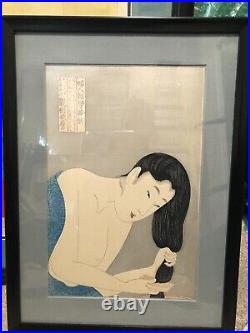
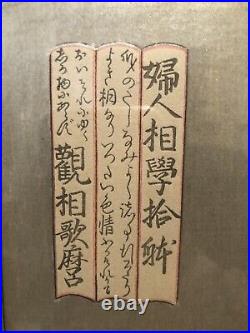
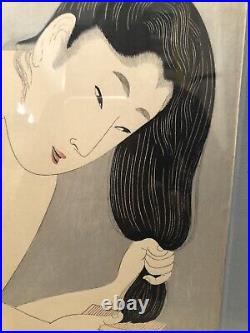
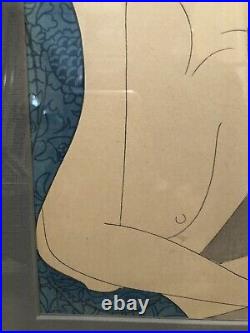
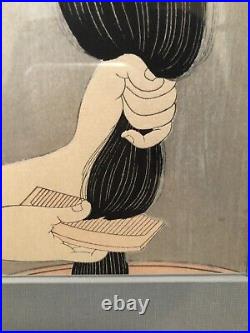

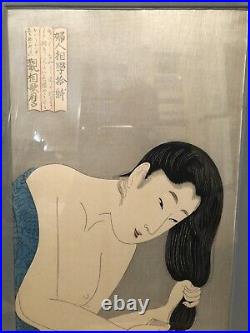

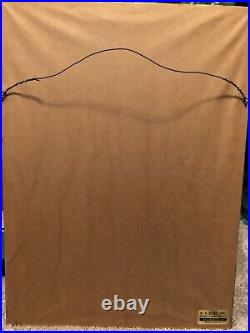

Inscription translation: Ten Types in the Physiognomic Study of Women. She has a nice personal appearance and in all respects is a good type. In general her passions run deep, but she is no fool to let them run away with her. Inscription position: image, top left, in cartouche in Japanese. Frame 15 x 20. Print visible: 9 3/4 x 15. Kitagawa Utamaro was known in his own time – as he is now – for his’pictures of beautiful women. Utamaro’s career as a specialist in this genre was forged in collaboration with publisher Tsutaya Ju-zaburo- (1750-97), and these pictures were part of an ongoing social fascination for appraising, classifying and marketing’beauty’. In 1792-3 Tsutaya published this print by Utamaro, in a group intended to be a set of ten studies on female physiognomies. Subtitled’Uwaki no so-‘, this picture describes the figure as, literally, the’light-hearted’, or’fancy-free’ type. Using the term’physiognomy’ referred to period practices of discerning personality and destiny through a close analysis of facial features,’reading’ them, according to period manuals for the pseudo-science. The text thus describes this image as a study of an individual classified by physiognomy as a’type’. Shown in mid-action, as though she is turning to speak to an associate, the woman seems to have been drawn as though she might have been seen by Utamaro himself. The mica-printed background enhances the contours of the figure while at the same time alluding to the idea of a mirror or a silver leafcovered standing screen. However, comparison with period literature demonstrates that Utamaro was not basing his design upon direct observation, but referring to another set of social and sexual classifications. The posture and gesture of the’fancy-free type’ matches the design of an unlicensed prostitute disguised as a dancer (odoriko) illustrated in a book by Santo- Kyo-den, published by Tsutaya in 1786. Physiognomic’ study, too, alluded to an erotic book, Ehon hime hajime (Picture Book: First-Time Princesses) of 1790, by Utamaro and Katsukawa Shuncho -, in which facial types were’matched’ to physiological qualities of the sexual organs see also Shunga, cat. Discerning viewers of his time likely would have recognized these sources as the real’physiognomic’ meaning of the image.
